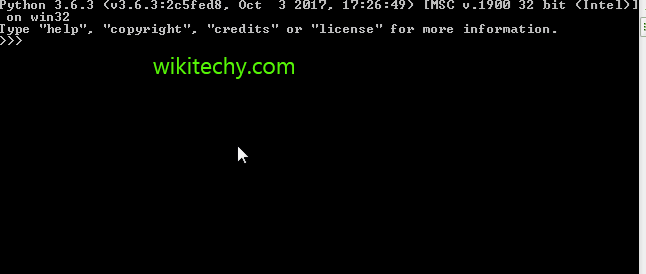
Learn Python - Python tutorial - ChainMap in Python - Python examples - Python programs
Python also contains a container called “ChainMap” which encapsulates many dictionaries into one unit. ChainMap is member of module “collections“.
Operations on ChainMap
Access Operations
1. keys() :- This function is used to display all the keys of all the dictionaries in ChainMap.
2. values() :- This function is used to display values of all the dictionaries in ChainMap.
3. maps :- This function is used to display keys with corresponding values of all the dictionaries in ChainMap.
python - Sample - python code :
# Please select Python 3 for running this code in IDE
# Python code to demonstrate ChainMap and
# keys(), values() and maps
# importing collections for ChainMap operations
import collections
# initializing dictionaries
dic1 = { 'a' : 1, 'b' : 2 }
dic2 = { 'b' : 3, 'c' : 4 }
# initializing ChainMap
chain = collections.ChainMap(dic1, dic2)
# printing chainMap using maps
print ("All the ChainMap contents are : ")
print (chain.maps)
# printing keys using keys()
print ("All keys of ChainMap are : ")
print (list(chain.keys()))
# printing keys using keys()
print ("All values of ChainMap are : ")
print (list(chain.values()))python programming - Output :
All the ChainMap contents are :
[{'b': 2, 'a': 1}, {'c': 4, 'b': 3}]
All keys of ChainMap are :
['a', 'c', 'b']
All values of ChainMap are :
[1, 4, 2]
Note : Notice the key named “b” exists in both dictionaries, but only first dictionary key is taken as key value of “b”. Ordering is done as the dictionaries are passed in function.
1. new_child() :- This function adds a new dictionary in the beginning of the ChainMap.
2. reversed() :- This function reverses the relative ordering of dictionaries in the ChainMap.
python - Sample - python code :
# Please select Python 3 for running this code in IDE
# Python code to demonstrate ChainMap and
# reversed() and new_child()
# importing collections for ChainMap operations
import collections
# initializing dictionaries
dic1 = { 'a' : 1, 'b' : 2 }
dic2 = { 'b' : 3, 'c' : 4 }
dic3 = { 'f' : 5 }
# initializing ChainMap
chain = collections.ChainMap(dic1, dic2)
# printing chainMap using map
print ("All the ChainMap contents are : ")
print (chain.maps)
# using new_child() to add new dictionary
chain1 = chain.new_child(dic3)
# printing chainMap using map
print ("Displaying new ChainMap : ")
print (chain1.maps)
# displaying value associated with b before reversing
print ("Value associated with b before reversing is : ",end="")
print (chain1['b'])
# reversing the ChainMap
chain1.maps = reversed(chain1.maps)
# displaying value associated with b after reversing
print ("Value associated with b after reversing is : ",end="")
print (chain1['b'])python programming - Output :
All the ChainMap contents are :
[{'b': 2, 'a': 1}, {'b': 3, 'c': 4}]
Displaying new ChainMap :
[{'f': 5}, {'b': 2, 'a': 1}, {'b': 3, 'c': 4}]
Value associated with b before reversing is : 2
Value associated with b after reversing is : 3
